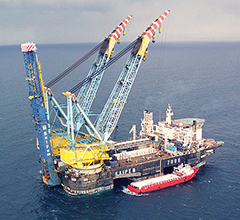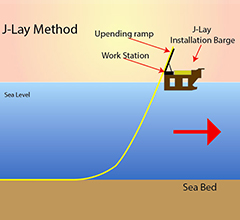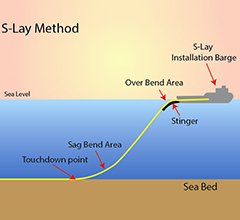
The launching of subsea pipelines is a very complex operation: suffice it to say that the sizing of the pipes is usually based on the loads they must withstand during this delicate phase. Very sophisticated simulation tools are commercially available that provide very reliable results, but require large amounts of data and a lot of time to fine-tune the corresponding models.
The Mechanical Engineering Group has developed a set of tools for simplified analysis of the static and dynamic behavior of piping: These are useful both in the design phase of the process and during the start-up itself.


The Mechanical Engineering Group, together with researchers from DICEA@univPM and engineers from SnamProgetti in Fano, has developed a series of models for different applications for the S and J start of subsea pipelines. Thus, the static analysis of the J-launch is carried out using a three-field analytical model in which different types of equations describe the behavior of the pipeline in the hanging section, in the section resting on the seabed and in the intermediate section (sagband); the lengths of the relevant sections are determined in such a way as to ensure the continuity of the boundary conditions. For the investigation of the dynamic behavior, on the other hand, a nonlinear finite element model was developed in which the elasticity of the soil and the displacement of the soil contact point (touchdown point) are taken into account.